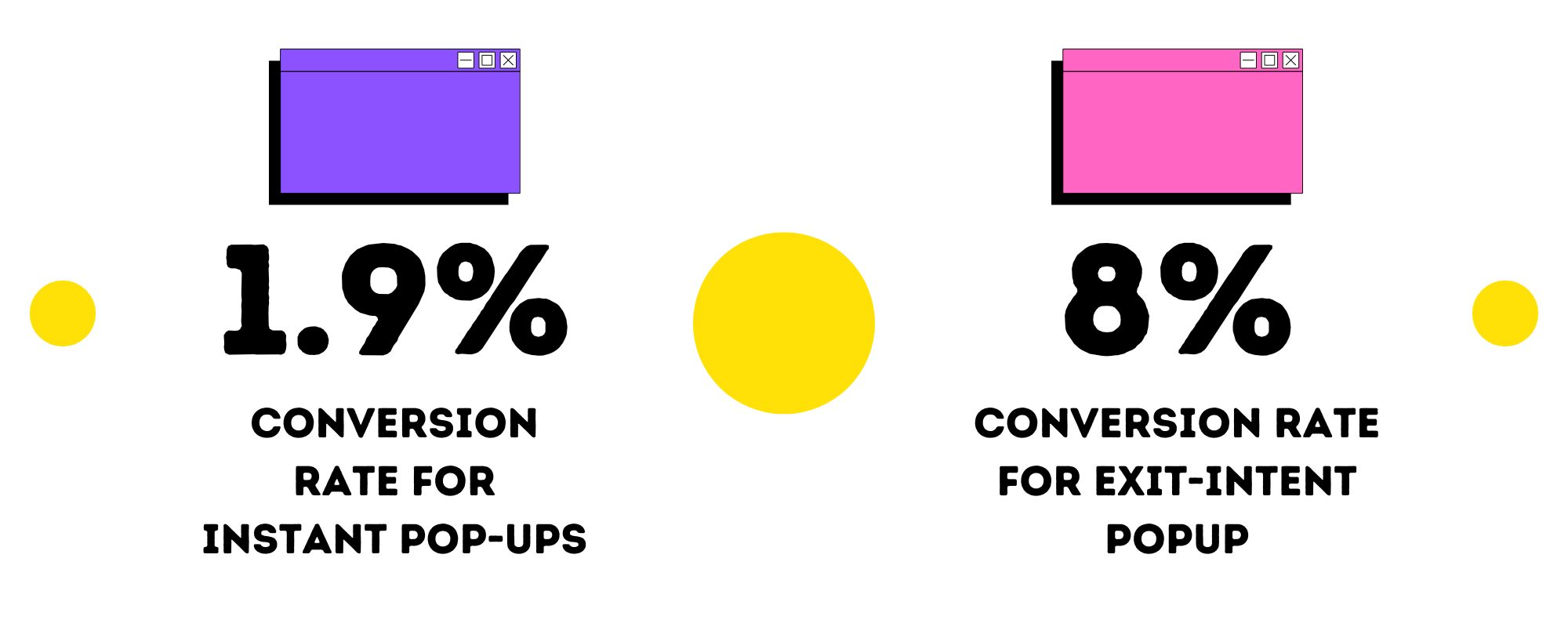Are you considering creating an email list, but still not quite sure why they’re necessary? We’ll tell you one thing: email marketing is still one of the primary drivers of traffic. Emails are 40 times more effective at bringing in new consumers and 6 times more likely to result in greater click-through rates.
That’s why you need an email list. Sending personalized emails to the right people is a powerful way to increase engagement and drive more traffic. When you tailor your emails to the unique interests, habits, and preferences of your subscribers, you create a more engaging and relevant experience that motivates them to interact more with your brand.
Building an email list is the first step. The key is to gather people who are initially interested, because they are the ones who are more likely to be converted into customers, and the best is when they become advocates.
What is an email list?
An email list is a compilation of email addresses that a company or person collected from clients, potential clients, or website users with consent. These email addresses are from people who gave you permission to send them customized and targeted marketing messages, newsletters, promotions, or updates.
You create an email list to increase the number of potential leads. That way, you can later turn them into devoted customers. But how do you get these email addresses in the first place?
You need to be creative in luring your potential customers in.
Email list building is encouraging people to subscribe to your email. This can be done in many ways, including pop-up forms, giveaways, lead magnets, surveys, images, and many more, which would be tackled later in this article.
The power of email lists in email marketing
Email lists are essential to your email marketing. They give you the ability to:
- Establish and maintain connections with your audience
- Promote consumer interaction
- Boost revenue or conversions
To customize your content to specific audiences, your email lists should be segmented.
Segmentation means separating email lists according to the subscribers’ unique preferences, demographics, stage on the customer journey, or purchase activity.
You might have asked a few questions when they signed up for your email lists, and you can use their answers to segment them.
You can also set up automatic segmentation based on their activity, like downloading a guide you sent, purchasing a specific product, or clicking on one of your offers.
Segmentation makes marketing campaigns more relevant and successful. Recent research on email marketing shows that segmented emails generate 18 times more revenue than more generic emails.
Here are top reasons why email lists and segmentation raise your email marketing game:
More relevant content
The more relevant your email is, the more likely your audience will stay engaged. When you segment your list, you get to monitor what kind of content each segment prefers. Then you can create and send content that is more personalized and holds more staying power to your audience’s mind.
This is a lot better and more effective than sending a general email to everyone on your list, with no guarantee that at least half of them will read it, or even be interested in it.
Improves your reputation and deliverability
Have you heard of your sender’s reputation? Apparently, an Internet service provider (ISP) can give a score to any company that sends emails. These scores determine whether your email is going to someone’s inbox or spam bin, where it will never be seen again.
Your sender reputation score is influenced by a number of factors, from engagement levels, the quality of your email list, to your email’s content.
Low engagement rates and low-quality content signals to email service providers that your company may be sending spam emails or emails with unwanted content. This is why you shouldn’t buy email lists– people who are not interested in your brand will not read your emails, negatively affecting your sender reputation.
Meanwhile, email lists and segmentation improves your reputation score. You can create and send relevant emails that can elicit higher engagement, resulting in a higher reputation score which guarantees you’re in people’s inboxes and not in their Spam folders.
Better customer experience leads to conversions
As previously mentioned, segmented email lists let you determine the type of content each segment prefers, which allows you to create and to send just the right content they might be interested in the next time.
In return, your recipients will see that their subscriptions are worth it as they get something valuable out of it. And then it’ll only take a short amount of time until you’ve actually convinced them to purchase.
The goal of email marketing is to drive revenue, and an excellent customer experience significantly helps you achieve that goal. By sending emails that are aligned with your lead’s current place on the customer journey, you can help them decide and progress further down the funnel.
Increased ROI
Email lists and segmentation ultimately lead to one significant metric to your business: increased ROI. Statistics show that segmented and targeted email campaigns account for 58% of all email ROI.
Email segmentation offers more accurate consumer targeting and delivery of engaging content, a big factor in increasing ROI. Although email marketing already has a reasonably high ROI, your success will still depend on your ability to successfully target your audience and discover the best ways to communicate with them to actually motivate them to take an action, click your email, and go to your website.
Ways to build your email lists
Before you can proceed to segmentation, you need to build your list!
You can build your email list several ways. When you use your own strategies to bring in leads, you can also use the same qualifiers to segment your list.
Once you employ these email list building tactics and you start to get leads, you get insights of what type of content they’re interested in.
You see who prefers to fill out your opt-in forms, who downloads your reports, who engages with your interactive quiz, or who participates in giveaways.
You can group these people together, and the segments you form will help you streamline your messaging to nudge them along the conversion funnel.
These tactics are indeed hitting two birds with one stone, and here common tactics used to build email lists:
Have a standard opt-in form
It’s a standard for websites to have an opt-in form, typically at the bottom or in the center of the screen. That’s because opt-in forms are quite significant. Customers and website visitors who opt-in to receive emails from your business are most likely to be interested in your goods and services, as they opt in to receive emails and promotions.
Opt-in email list makes sure you always have access to certain segments of your market without needing to chase them. And since they have consented to receive these emails, there is a good chance these emails will generate high open rates, click-through rates, and conversions.
Use instant popup sign-up forms
While standard opt-in forms are important, they can also be passive at times. Using a pop up sign-up form can be a better approach.
Statistics show that conversion rate for instant pop ups, which show nearly immediately after you land on a page, is about 1.9%. And the exit-intent popup converts at 8%, four times higher.
Pop-up forms are a great way to offer lead magnets for lead generation since you can program them to appear at specific times or during specific events. You can display the pop-up after a set amount of seconds, pages visited, how much the page scrolled, or when the user is about to leave.
Carefully assess these key points, and make sure you include a strong, compelling CTA.
Create interactive sign-up forms
Sometimes, people just get tired of the same old format of pop up sign-up forms, and they just easily click the X button to shoo them out of their screens. That’s why you need to be more creative.
Try interactive sign-up forms that are fun for web visitors. To create an effective interactive form, consider the following:
- Make it eye-catching. Use bright and appealing colors, fonts, and graphics.
- Keep it simple and understandable.
- Offer something valuable.
- Make it easy to play the game and to enter their email address.
Offer incentives
Lead generation is a give and take process. If you want to get people’s attention, moreover their subscription, you need to offer something relevant and valuable in exchange.
Some of the things they’ll find worthy are:
- Discounts (especially for new subscribers as a thank you for signing up)
- Sale (for existing subscribers who support your business)
- Free shipping (for new subscribers or for customers who reach a certain spend amount)
Offer valuable resources
A valuable resource, or a lead magnet, is any resource your visitors want to access, such as a PDF guide, ebook, gift guide, or stock images. And in order to get that resource, they need to sign up for your email campaigns.
Make sure the resources you offer are relevant to your business and to your leads, and filled with just enough value to make them want to subscribe for it.
Offer giveaways
Another great way to build your email list is through giveaways. You can do this on your social media channels where you can reach more people.
Make it specific so that the giveaway’s main goal—getting participants who are qualified leads—is achieved. And remember, make sure the giveaway reward is specifically targeted at the audience you want to attract.
Launch free and relevant interactive tools
A fun and effective strategy to increase email list signups is to provide free interactive tools like quizzes, calculators, and generators.
These tools can provide your website visitors more value, entice them to interact with it, and even establish your company as an expert in the field.
Why you should never buy email lists
Violation of GDPR
Legally, the majority of email marketers must give customers the option to stop receiving emails from them. The option should be accessible right in the email message. That’s why for-sale email lists directly violate the General Data Protection Regulation (GDPR), a European data privacy law that emphasizes the opt-in and opt-out side of B2C marketing.
To send emails to your contacts under this act, you need their explicit consent. The term “explicit” here means the opt-in checkbox isn’t pre-checked and the person must be the one to check it.
So when you buy email lists, the recipients are not offered this choice, which means you are violating GDPR even before sending your first email.
People on a for sale list don’t actually know you
Whether the email list you bought was acquired legally or illegally, it still points to the fact that those people did not opt in for your email. The emails could be illegally acquired from a website, or legitimately acquired but from other business’ email lists.
Even if the opt-in procedure says, “Opt-in to receive information from us, or offers from other companies we think you might enjoy,” the recipient doesn’t remember having a specific relationship with you in the past. When you show up in the recipients’ inboxes, it is very likely that they will mark you as spam.
Causes damage to your IP reputation and email deliverability
Some organizations have dedicated softwares to combat email spamming, also called as spam traps. Spam traps identify suspicious emails and they’re activated when an email address receives regular traffic but yields a hard bounce because it is outdated or invalid. The email becomes a spam trap, and reports the sender as spammer.
This is the risk you’ll experience with for-sale email lists. You can’t determine if they’re still active, or already yielding a hard bounce and flags you as a spammer. You risk not only your email deliverability, but also the reputation of your IP address and your company.
You’ll come off as annoying
Receiving emails from a company you’re not familiar with can come across as annoying. Even if you know that someone is a perfect fit for your goods or services, if you force your email content upon them too quickly, you run the danger of losing their trust and possible future sales.
You risk penalty from your email service provider
Aside from your deliverability and reputation, buying email lists can put your email account too. Email programs such as Gmail, Yahoo!, and Outlook don’t want to be connected to accounts who are marked as spam by recipients. Email service companies like AWeber will even go as far as to close your account right away if they believe you are sending spam.
Outsourcing list building and lead generation
In a way, the ultimate goal of email marketing is to generate sales. Before sales happen, you need to generate and nurture leads. Building your email list is lead generation, while email marketing nurtures those leads.
Lead generation is a critical aspect of business because that’s where you generate interest for your products and services, and convert those leads into customers.
Lead generation requires skills and expertise, and businesses who are busy managing other business core operations make the smart decision of outsourcing lead generation or list building.
Here’s what you can expect when you outsource your email list building and lead generation.
- Improved lead quality – high quality leads have a higher chance to convert into customers. When you outsource lead generation, you gain access to a group of experts who produce outstanding leads. They specialize in using advanced strategies to pinpoint and discover the best leads for your business.
- Better lead analysis and data management – Outsourced email marketing teams don’t just create leads, they manage and analyze the data generated by the past and ongoing lead generation campaigns. They access and analyze data to make better decisions.
- Target the right audience – Lead generation experts know who your target audience is, and they direct their efforts towards them. This prevents you from wasting time tapping into irrelevant leads that might not be working anymore.
- Automated email campaigns – Email marketing experts utilize automation, and you benefit greatly from that. The time required to manually create and send emails is substantially reduced by automated email campaigns.
- Gain access to latest technologies – Lead generation is continuously growing, and staying up to date with the latest technologies helps you stay productive, relevant, and effective. Outsourcing lead generation, you have a team who are adept in using the latest technologies and techniques to generate more converting leads.
At USource, our specialist teams manage all aspects of lead generation, from web development for landing pages, graphic design and copywriting for the lead magnets, to list setup on email platforms, and more.
If you don’t have an email list yet, it’s never too early nor too late to start. And it’s definitely a must for your business.









